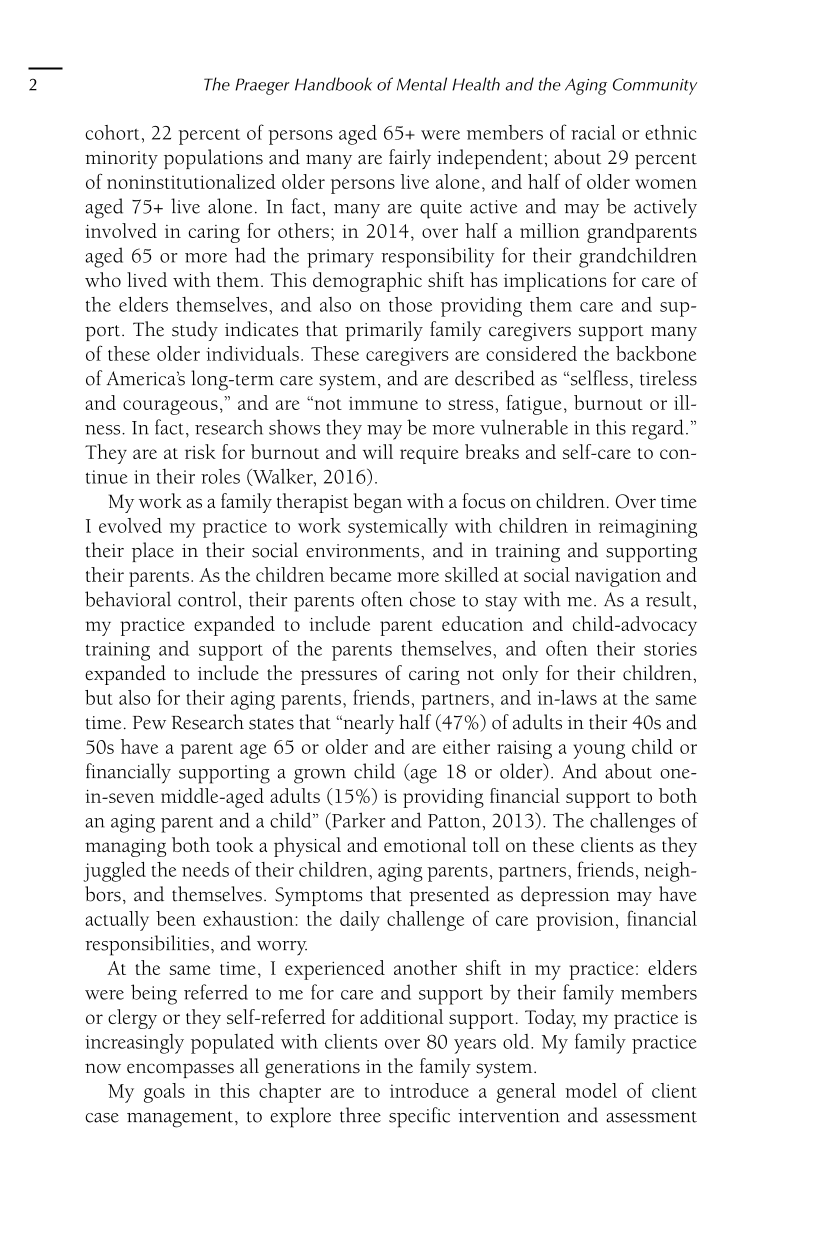2 The Praeger Handbook of Mental Health and the Aging Community
cohort, 22 percent of persons aged 65+ were members of racial or ethnic
minority populations and many are fairly independent; about 29 percent
of noninstitutionalized older persons live alone, and half of older women
aged 75+ live alone. In fact, many are quite active and may be actively
involved in caring for others; in 2014, over half a million grandparents
aged 65 or more had the primary responsibility for their grandchildren
who lived with them. This demographic shift has implications for care of
the elders themselves, and also on those providing them care and sup-
port. The study indicates that primarily family caregivers support many
of these older individuals. These caregivers are considered the backbone
of America’s long-term care system, and are described as “selfless, tireless
and courageous,” and are “not immune to stress, fatigue, burnout or ill-
ness. In fact, research shows they may be more vulnerable in this regard.”
They are at risk for burnout and will require breaks and self-care to con-
tinue in their roles (Walker, 2016).
My work as a family therapist began with a focus on children. Over time
I evolved my practice to work systemically with children in reimagining
their place in their social environments, and in training and supporting
their parents. As the children became more skilled at social navigation and
behavioral control, their parents often chose to stay with me. As a result,
my practice expanded to include parent education and child-advocacy
training and support of the parents themselves, and often their stories
expanded to include the pressures of caring not only for their children,
but also for their aging parents, friends, partners, and in-laws at the same
time. Pew Research states that “nearly half (47%) of adults in their 40s and
50s have a parent age 65 or older and are either raising a young child or
financially supporting a grown child (age 18 or older). And about one-
in-seven middle-aged adults (15%) is providing financial support to both
an aging parent and a child” (Parker and Patton, 2013). The challenges of
managing both took a physical and emotional toll on these clients as they
juggled the needs of their children, aging parents, partners, friends, neigh-
bors, and themselves. Symptoms that presented as depression may have
actually been exhaustion: the daily challenge of care provision, financial
responsibilities, and worry.
At the same time, I experienced another shift in my practice: elders
were being referred to me for care and support by their family members
or clergy or they self-referred for additional support. Today, my practice is
increasingly populated with clients over 80 years old. My family practice
now encompasses all generations in the family system.
My goals in this chapter are to introduce a general model of client
case management, to explore three specific intervention and assessment









































































































































































































































































































